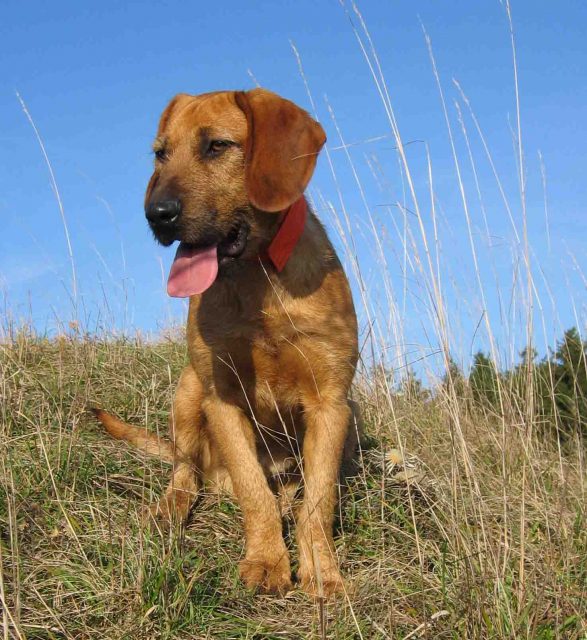Type the name of the breed you're looking for below
[wpdreams_ajaxsearchlite] Don't see the breed your're looking for? Click here and let us know!
Breed Characteristics
1 paw - breed exhibits the least amount of this characteristic
5 paws - breed exhibits most amount of this characteristic
Styrian Coarse-Haired Hound
| Other Names | Steirische Rauhhaarbracke, Peintinger Bracke, Steirische Rauhhaarige Hochgebirgsbracke, Wirehair Styrian Mountain |
| Country of Origin | Austria |
| Weight | 33 - 40 lbs. (15 – 18 kg) |
| Height (at withers) | 17.5 – 21 in. (45 – 53 cm) |
| Coat | The breed name refers to the coat, which is harsh and rough (although not shaggy). |
| Colour | Coat colours are red and fawn; a white mark on the chest may be present. |
| Litter Size | 3 - 6 puppies |
| Life Span | 10 - 12 years |
| Origin & History | The breed was created in the 1870s by Karl Peintinger, an industrialist from Styria. Peintinger crossed his "Hela 1", from an old type of Hanoverian scent hound, with an Istrian Hound, and continued selective breeding until a rough-coated, hardy hunting dog was achieved. The breed is used by Austrians and Slovenians to hunt wild boar. It can also be used to track wounded animals through rough terrain and in high altitudes |
| Personality | The Styrian Coarse-Haired Hound is known as an easy keeper, and they are valued for toughness in enduring inclement conditions during the hunt, for which they have an intense, relentless drive. Their facial expressions are serious but not unkind. They are a highly intelligent, steady and pleasant companion. |
Care Requirements
| Health | There are no known breed-specific health concerns. |
| Grooming | The Styrian Coarse-Haired Hound is very rarely groomed as a working dog, and so almost certainly does not require professional grooming. It’s rough, shaggy coat does require a regular brushing, at least two to three times a week. There are apparently no reports on the breed’s shedding, but it is safe to assume that this breed is a shedder. |
| Exercise | This breed has very substantial exercise requirements. This dog is capable of working long hours in very difficult terrain and will not be satisfied with a daily potty walk. Styrian Coarse-Haired Hounds should receive at least 45 minutes to an hour of vigorous activity every day, and preferably would receive more. Without this exercise, Bosnian Rough-Haired Hounds often develop behavioral problems such as destructiveness, excessive barking, hyper activity, and over excitability. Hounds were bred to bay as they hunted so that the hunter could follow. As a result they tend to be louder and more vocal than other breeds. These tendencies can be greatly reduced with proper training and exercise, but they cannot be eliminated. Because the Styrian Coarse-Haired Hound has very high exercise requirements and is quite vocal, this breed does not adapt well to apartment life and does much better in a rural environment. |
| Other Considerations | As with many breeds bred for work, they are not generally kept as a companion dog and do not make good pets; they require a lot of space and exercise, and can be dominant and destructive. |



